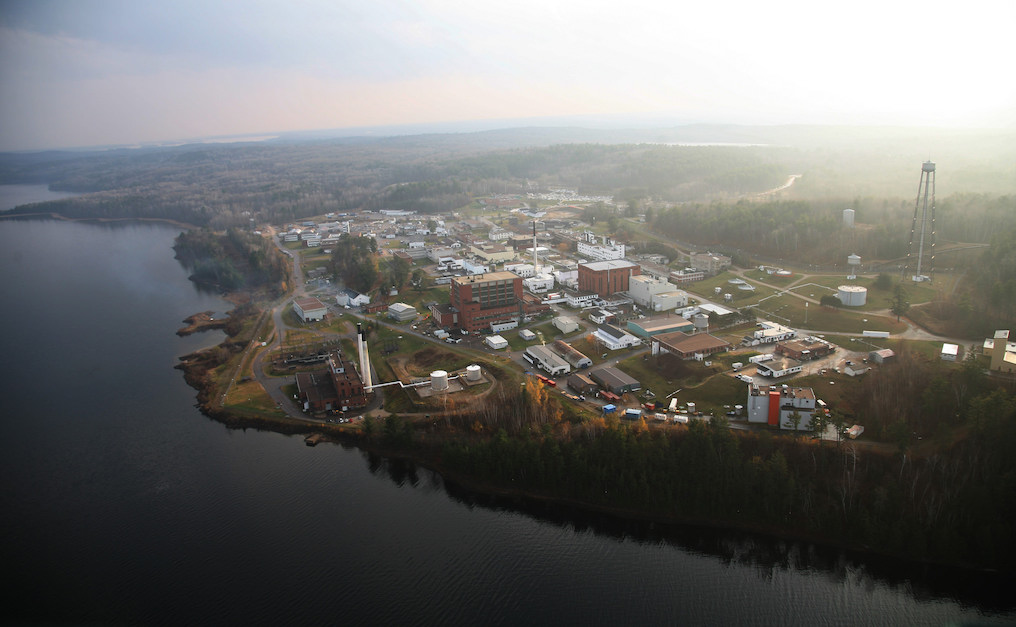On the banks of the Ottawa River, some 200 kilometres northwest of Ottawa, sits the Canadian Nuclear Laboratories (CNL). Created in 1944 by the U.K, U.S. and Canada to produce plutonium for nuclear bombs, this Chalk River facility experienced numerous serious accidents in the early decades of atomic energy and weapons. Home of the ZEEP (1945), NRX (1947) and NRU (1957) reactors, and various plutonium reprocessing facilities, over a hundred CNL buildings now await decommissioning.
In the Plutonium Recovery Laboratory, floors and walls contaminated by accidents were simply painted over. The highly radioactive reactor core from the 1952 NRX meltdown was buried in the Perch Lake Basin, and remains there today. Radioactive liquids and equipment were dumped in unlined sand trenches. Waste plumes of strontium-90 and tritium are discharging into Perch Lake and the Ottawa River. The $6.5 billion in federal nuclear liabilities (mostly at Chalk River) exceeds the total of all other environmental liabilities on the balance sheet of the Government of Canada.
In 2015 the Harper government contracted a multinational consortium of five U.K, U.S. and Canadian companies (including SNC Lavalin) to operate CNL, with instructions to carry out decommissioning and waste disposal as quickly and cheaply as possible. The consortium proposes a so-called “Near Surface Disposal Facility” (NSDF), a mound of one million cubic metres of nuclear waste on a hillside draining into the already highly contaminated Perch Creek wetlands, less than one kilometre from the Ottawa River.
Using “bulk demolition” techniques, radioactive equipment, building rubble, contaminated soils, drums, pails and tanks of waste would all be dumped into the mound. Commercial and industrial wastes as well as wastes from other federal facilities in Gentilly, Quebec, Douglas Point, Ontario, and Whiteshell, Manitoba would be shipped to Chalk River for permanent disposal.
Similar to a municipal landfill, the mound would have plastic liners on the bottom. Radioactive wastes would be exposed to wind, snow and rain during a 50-year operational period, then covered. A wastewater treatment plant would capture and remove some, but not all, of the toxic contaminants in the leachate. After dumping ceases, the treatment plant would close, the mound cover would deteriorate, water would again saturate the mound, and radioactive leachate (along with mercury, lead, PCBs, dioxins, etc.) would migrate through Perch Creek into the Ottawa River.
The NSDF environmental assessment, led by the Canadian Nuclear Safety Commission (CNSC), has attracted over 200 comments, most highly critical. But CNSC has never turned down a major nuclear facility. According to a CNL-CNSC protocol, the only remaining legal hurdle for the project is CNSC’s environmental assessment hearing, currently scheduled for June 2018. If CNSC then gives the project a green light, the federal cabinet will have no say in the matter and construction of the dump can begin.
Once old buildings are bulldozed into the dump and the Chalk River site is “modernized,” CNL hopes to use some of its billion-dollar-per-year federal subsidies to build as many as seven “small modular reactors.”
The consortium now wants a 10-year operating licence for the entire Chalk River site. A CNSC hearing is scheduled for January 2018. CNSC staff are proposing radical changes to CNL’s licence to allow the consortium maximum freedom to demolish buildings and build new facilities. All is being done under a heavy veil of secrecy. CNSC will not accept submissions on the NSDF at the January hearing. CNSC does not post hearing documents on its website. Members of the public must submit written comments before December 11 and travel to Pembroke, Ontario in late January if they want a 10-minute time slot to voice their concerns.
The highly flawed NSDF environmental assessment process was enabled by changes to the Canadian Environmental Assessment Act made in the Harper government’s 2012 omnibus budget bill. House of Commons e-petition 1220, open for signature until December 9, calls upon the Government of Canada to suspend environmental assessments of permanent radioactive waste disposal projects, restart these projects under new environmental assessment legislation, and replace the CNSC as decision maker. Please sign the petition and share it with your friends.
Photo: Canadian Nuclear Laboratories/flickr
Ole Hendrickson is a retired forest ecologist and a founding member of the Ottawa River Institute, a non-profit charitable organization based in the Ottawa Valley. A version of this article was first posted on Sierra Club Canada’s blog.
Like this article? rabble is reader-supported journalism. Chip in to keep stories like these coming.




